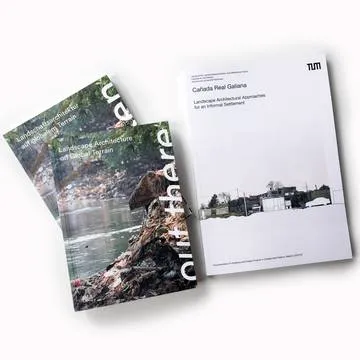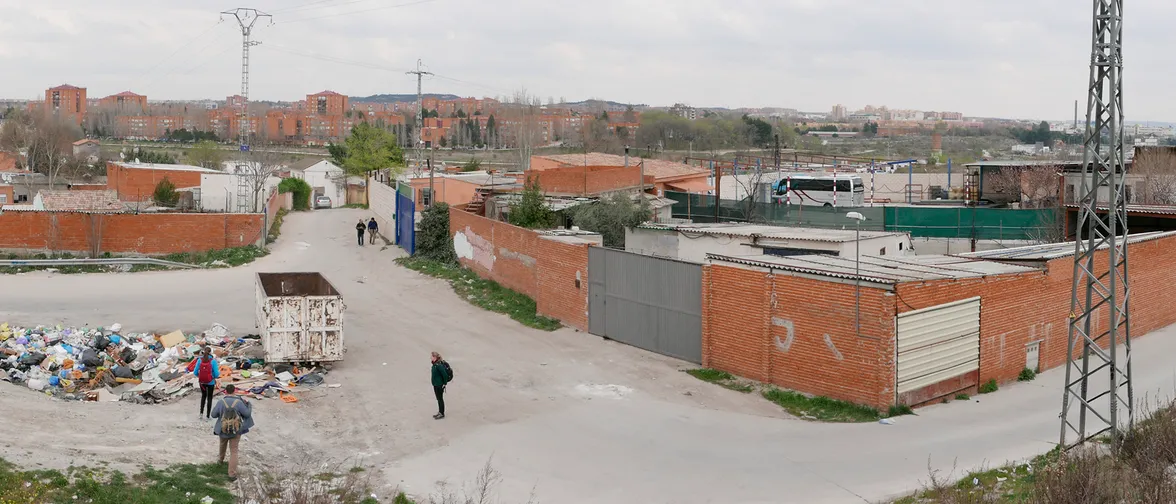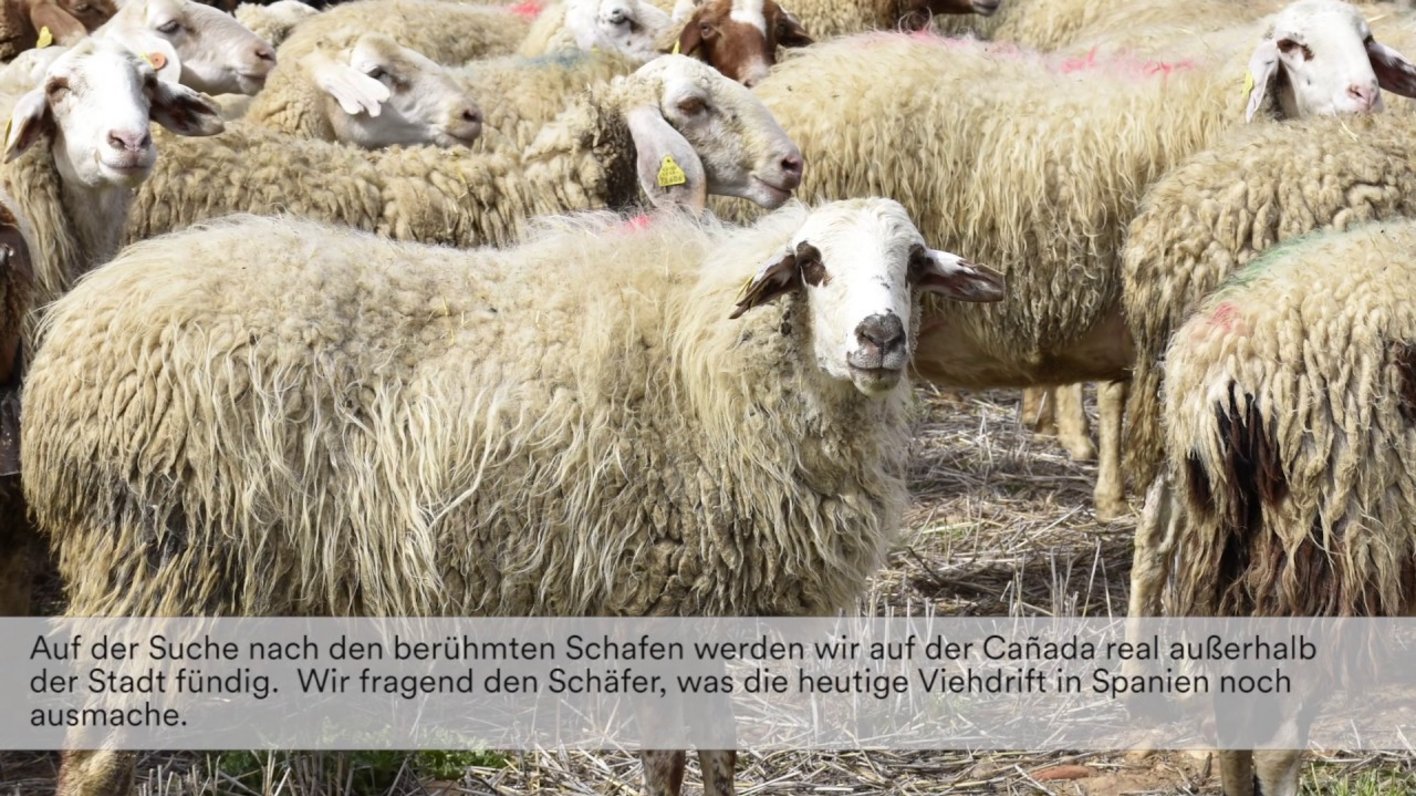Cañada Real Galiana, Madrid
Landscape Architectural Approaches for an Informal Settlement
Research Project at the Chair of Landscape Architecture and Public Space
Duration: 02/2015 until today
Team
Technische Universität München, Lehrstuhl für Landschaftsarchitektur und öffentlichen Raum: Prof. Regine Keller, Johann-Christian Hannemann, Dr. Mark Kammerbauer, Felix Lüdicke
Professur für Partizipative Technikgestaltung: Prof. Dr. Ignacio Farias, Dr. Tomás Criado
Cooperation Partners:
Technische Universität München, Professur für Partizipative Technikgestaltung: Prof. Dr. Ignacio Farías, Dr. Tomás Sanchez-Criado (PostDoc)
Universidad Politécnica de Madrid, Escuela Técnica Superior de Arquitectura de Madrid: Prof. Luis Basabe mit Studierenden
Universidad de Alcalá, Madrid: Prof. Dr. Daniel Zarza
Proyecto de Intervención Comunitaria Intercultural "Cañada Real Galiana" (ACCEM & Fundación Secretariado Gitano) insbesondere: Micaela Romana Preoteasa und Susana Camacho Arpa
Arquitectura Sin Fronteras Madrid, Arbeitsgruppe Cañada Real Galiana: Ana Isabel Garrido, Francisco Guerrero
Familien der Cañada Real
Goethe Institut Madrid: Margareta Hauschild, Rebeca Castellano
Comunidad de Madrid: José Antonio Martínez de Páramo, Pedro Navarrete
Ministerio de Agricultura, Alimentación y Medio Ambiente: Guillermo Fernández Centeno
Architekturkollektive basurama, zuloark, Todo por la Praxis
Travel Grants
DAAD-PROMOS, ERASMUS-Programm
Research Aim
Design of alternative development scenarios for the informal settlement Cañada Real Galiana in Madrid—between a critical reconstruction of historical cultural landscape and the improvement of the living conditions and environment of the residents on the site.
Short Description
Since the Middle Ages, on the way of Cañada Real Galiana, Merino sheep have been driven from summer to winter pastures. In Spain, these routes have a total length of some 125,000 km. Once, a large part of the Spanish power was based on the wool trade. The Mesta, the union of sheep breeders, represented this power from 1273 to 1836. It organized the migration of sheep from Andalusia and Extremadura to Castile. Today, some of these routes have become recreational routes.
More interesting is the fact, that along Cañada Real Galiana, on a stretch of 15 km southeast of Madrid, the „largest slum of Europe“ has developed. There are about 10-30,000 people illegally living. So far, the Community of Madrid has no clear concept for dealing with the informal settlement and reacts with the re-settlement of the people living here.?The overlapping of a historical structure with informal urbanization, has been the subject of research for more than two years at the Chair of Landscape Architecture and Public Space of TU Munich.
Exhibition
The project was presented from April 27th to August 20th, 2017 in "out there. Landscape Architecture on Global Terrain"
Panel Discussion "Cañada Real Galiana, Madrid. The biggest slum of Europe"
04.05.2017, 18:00 Uhr
Panel discussion with Maximilian Dorner, Novelist, Regine Keller, and Johann Christian Hannemann, Technische Universität Münchenas part of the event's series of Landeshauptstadt München "Drinnen oder draußen? Zusammenleben in Europa"
Architekturmuseum der Technischen Universität München in co-operation with Kulturreferat, City of München
Project Videos
Publications

Keller, R., Hannemann, J.-C., Oberfrank, M.: "Cañada Real Galiana Vol. II — Design Proposals for the Open Spaces of the Centro Sociocomunitario de Cañada Real, Madrid", Fakultät für Architektur / Technische Universität München 2020, 124 Seiten, englisch/spanisch, verfügbar als OpenAcess-Publikation unter doi:10.14459/2019md1480981.
Keller, R., Hannemann, J.-C., Lüdicke, F., Loewel, L.: "Cañada Real Galiana—Landscape Architectural Approaches for an Informal Settlement", Fakultät für Architektur / Technische Universität München 2017/2020, 212 Seiten, englisch, verfügbar als OpenAcess-Publikation unter doi:10.14459/2020md1548698.
Keller, R.: "Cañada Real Galiana, Spanien – Der größte Slum Europas". In: Lepik et al. (Hg.) Draußen – Landschaftsarchitektur auf globalem Terrain, Hatje Cantz 2017, S. 48-57.
Pünktlich zur Ausstellung erschien das Buch draußen / out there in deutscher und englischer Sprache im Verlag Hatje Cantz, 2017. Es ist für 32 € im Buchhandel erhältlich. Ein Blick ins Buch ist auf den Seiten des Verlags möglich: englisch / deutsch.
Wenn Sie interesse an Printversionen der beiden obengenannten Publikationen haben, schreiben Sie uns bitte eine E-Mail oder besuchen Sie uns am Lehrstuhl in Freising.

